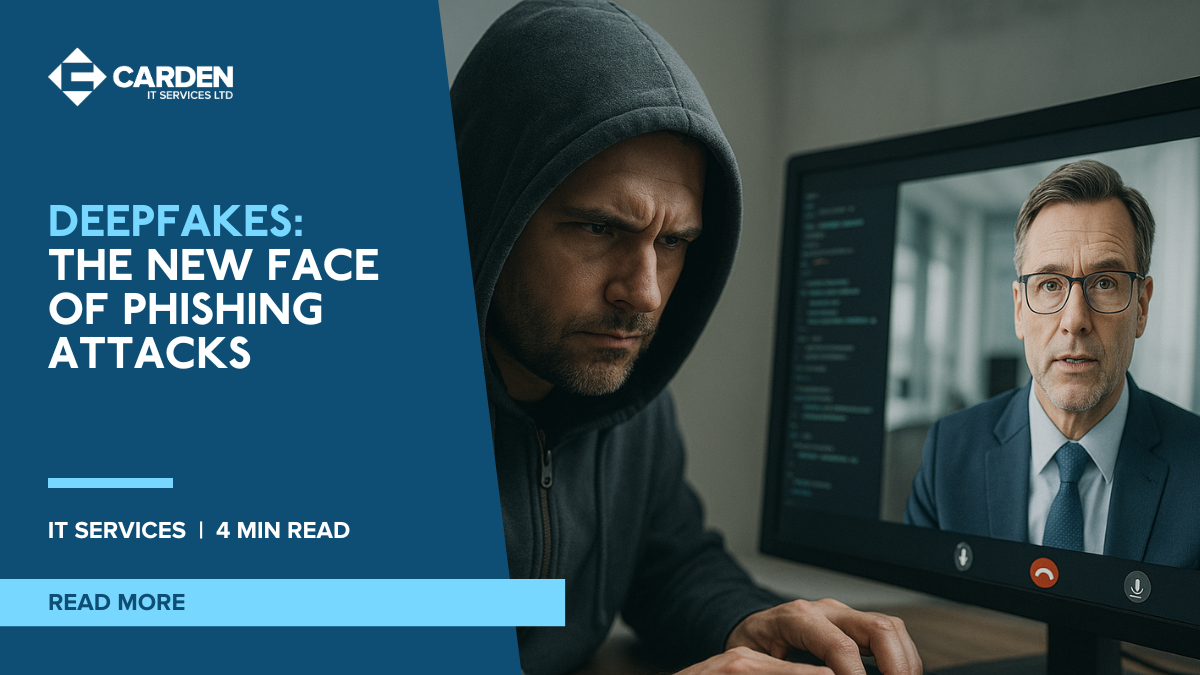Phishing has long been one of the most common cyberattack methods, typically arriving in the form of fake emails designed to trick you into clicking a malicious link or handing over sensitive information. But as technology evolves, so do the tactics of cybercriminals. One of the latest, and most alarming, developments is the rise of deepfakes in phishing campaigns.
What Are Deepfakes?
A “deepfake” is a digitally manipulated image, audio, or video clip that uses artificial intelligence to closely mimic a real person’s appearance, voice, or behaviour. These synthetic creations are generated using deep learning algorithms and are becoming increasingly difficult to detect.
What started as a novelty used in entertainment and social media is now being weaponised by cybercriminals, who can use deepfakes to impersonate colleagues, executives, or even clients, tricking recipients into taking action under false pretences.
The Next Generation of Phishing
Traditional phishing emails might try to spoof an email address or copy the writing style of a known contact. But imagine getting a phone call from your “CEO” asking you to urgently transfer funds, or joining a Teams video call where the person on-screen looks and sounds just like your company’s director, asking for confidential information.
That’s the new threat: deepfake phishing, also known as “vishing” (voice phishing) or “video phishing.”
Cybercriminals can now:
– Clone a person’s voice using just a few seconds of audio from a social media video
– Generate a lifelike video of someone saying things they’ve never actually said
– Use real-time face and voice manipulation to impersonate people in live video calls
This makes it easier than ever to manipulate employees into giving away passwords, financial information, or access to secure systems.
How to Spot a Deepfake
While deepfake technology is rapidly improving, there are still some tell-tale signs that something may be off:
- Lip movements that don’t quite match the audio
- Unusual blinking or facial expressions
- Strange lighting or pixelation around the face
- The person avoids eye contact or moves unnaturally
- Voice lacks emotion or has unusual rhythm or cadence
However, as the tech becomes more sophisticated, these signs can be harder to spot, so relying solely on visual or audio cues is risky.
Protecting Your Business
At Carden IT Services, we recommend these two actions to increase your organisation’s protection against deepfake phishing and similar social engineering attacks:
- Use Multi-Factor Authentication (MFA): Even if credentials are compromised through a deepfake attack, MFA can stop unauthorised access.
- Educate Your Team: Cybersecurity awareness is key. Regular training helps employees spot unusual behaviour and think critically before acting.
Final Thoughts
Deepfakes represent a troubling new chapter in the evolution of cybercrime. As AI technology becomes more powerful, so too do the tools available to hackers. But with the right protections, training, and awareness in place, your business can stay ahead of the threat.
Need help preparing your team for modern threats like deepfake phishing? Get in touch with Carden IT Services today.

